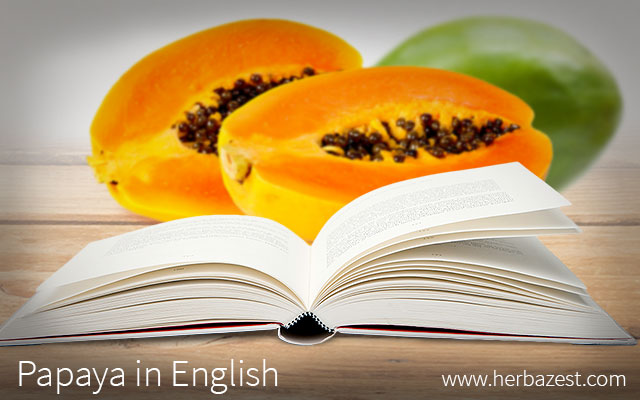Carica papaya is a tropical plant thought to be native to southern Mexico and Central America. Beginning in the early 16th century, papaya seeds were widely distributed to tropical regions of the world by Spaniards and other traveling European explorers of the time. From this complex legacy developed the word for papaya in English and several other major languages.
Papaya: English Pronunciation and Caribbean Roots
The Taíno were the native people from present-day Puerto Rico, Cuba, Jamaica, and the Dominican Republic at the peak of European exploration. The Spaniards were the first Europeans to encounter the papaya tree in the New World island of Hispaniola - nowadays the Dominican Republic and Haiti. In all likelihood, both the Spanish and Portuguese words papaya were derived from the Taíno ababaia. Misspelling the local word, they called the fruit papaya, and the trees from which they grew were known as papayo.
The term pawpaw is also used in modern English to designate a native American fruit (Asimina triloba), which is completely unrelated to the Caribbean Carica papaya.
The Spanish word papaya reached the English by the late 16th century, and it has withstood the test of time. The alternative spellings papaw and pawpaw emerged by the 17th century, and were pronounced with an emphasis on the second syllable. Over time these would give way to the contemporary pronunciation in which both syllables are equally stressed.
From Taíno to Spanish and English: Papaya Names Around the World
Aside from the original Taíno term ababaia, other linguistic iterations were observed in several prominent indigenous languages of South and Central America, suggesting a use for papaya that long predates European written accounts.
The Aztecs of Mexico invoked the healing medicinal properties of papaya by calling it chichihualtzapotla, word that means nurse fruit in Nahuatl language. Meanwhile the Mayas had a very similar-sounding word for it: ch'iich'puut.
In Puerto Rico, Venezuela, the Philippines, and the Dominican Republic, the papaya fruit is colloquially referred to as fruta bomba or lechosa.
In English, the precious fruit of the Carica papaya tree is still known as either papaya or pawpaw, and both terms share the common Taíno ancestral language. This poses a problem for North American anglophones, who recognize the term pawpaw as referring to the sweet-tasting custard apple of the native American Asimina triloba plant.
Thanks to its rich history of cultivation, a myriad of vernacular names for papaya fruit in English and many other languages have come to be. Tree melon, mountain papaya, and pau pau are just some monikers used to reference papaya in English.
As is the case in many other languages, the abundance of words used to designate papaya in English echoes of an intricate legacy of widespread papaya distribution, and close contact with diverse cultures across tropical regions of the world.
Sources
- CRC World Dictionary of Plant Names, pp. 438, 818 – 820
- Genetics and Genomics of Papaya, p. 8
- Library of Congress, Exploring the early Americas
- Purdue University, Papaya, Carica papaya L.
- Talking Taino, pp. 77 – 78
- The Cross Name Index to Medicinal Plants
- Yale University, The heritage and culture of Puerto Ricans




